Florida Crime Rate Analysis 2024: Challenges & Insights
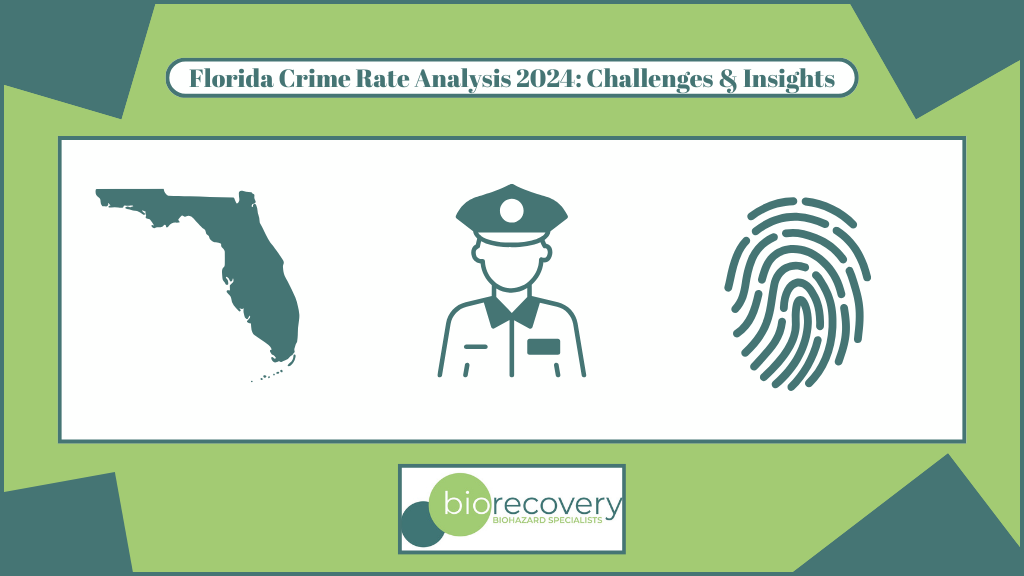
Understanding crime statistics is crucial for both public safety and effective policy-making. The latest FBI data collection offers a comprehensive view of crime trends across the United States, providing invaluable insights for residents and policymakers alike. In this blog, we at Bio Recovery Florida will delve into the most recent statistics for Florida crime rate, examining how the state compares to national averages and highlighting significant trends. By analyzing this data, we can better understand the challenges Florida faces in terms of crime and what measures might be necessary to improve public safety.
Data Limitations
Unfortunately, obtaining accurate and comprehensive crime data for Florida presents significant challenges. A major hurdle lies in the state’s limited participation in the FBI’s Uniform Crime Reporting (UCR) program.
- Low NIBRS Participation: The FBI has transitioned to a more detailed and modern system called the National Incident-Based Reporting System (NIBRS). However, less than 10% of law enforcement agencies in Florida are currently submitting data to NIBRS. This drastically limits the availability of reliable statewide crime statistics.
- Data Incompleteness: The reliance on older UCR data or the absence of data from many agencies creates significant gaps in our understanding of crime trends in Florida. Key information may be missing, leading to an incomplete and potentially inaccurate picture of the crime landscape.
- Potential for Bias: Incomplete data can introduce biases into any analysis. For example, if only a small subset of agencies report data, the statistics may not accurately reflect the true nature and extent of crime across the entire state.
- Underreporting of Crimes: It’s important to acknowledge that crime statistics, even when accurately collected, may underreport the true number of offenses. Victims may be reluctant to report crimes to the police for various reasons, such as fear of retaliation, distrust of law enforcement, or embarrassment.
These limitations underscore the critical need for improved data collection efforts in Florida to ensure a more accurate and comprehensive understanding of crime within the state.
Overview of Crime in Florida
Keeping the limitations in mind, let’s dive into the latest Florida crime statistics and how they compare to the national average.
National Crime Rate
Preliminary national data for the first quarter of 2024 indicates a decrease in violent crime across the United States, with reported violent crime decreasing by 15.2% compared to the same period in 2023. Specifically, murder rates decreased by 26.4%, rape by 25.7%, robbery by 17.8%, and aggravated assault by 12.5%.
Florida Crime Rate
Like we mentioned earlier there is limited data for Florida in 2024. To best understand how Florida compares with the rest of the nation we need to compare data from the same time period. Take a look at the graphs below comparing Florida crime rates with the national rate in 2023:
Violent Crimes




Property Crimes
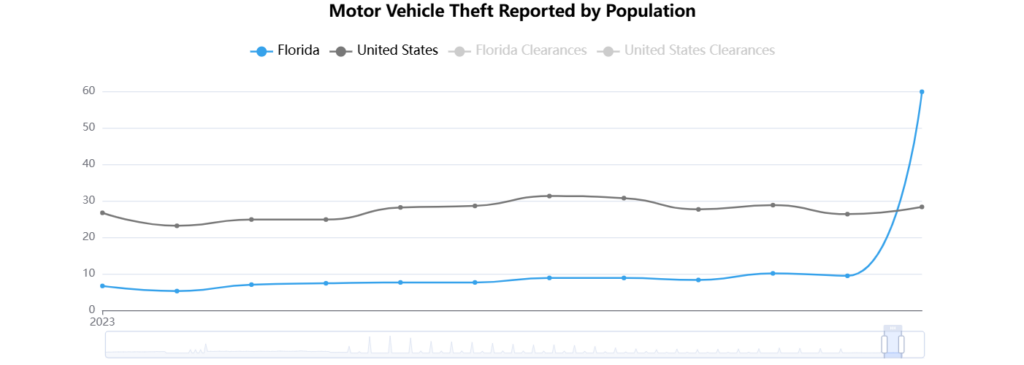
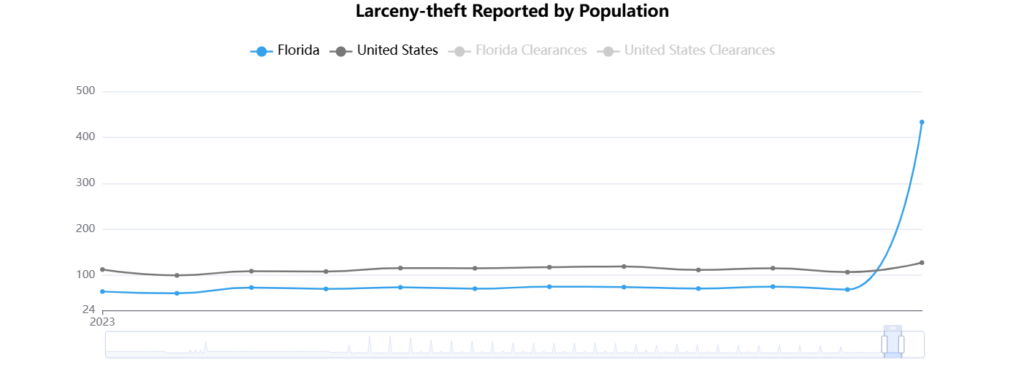
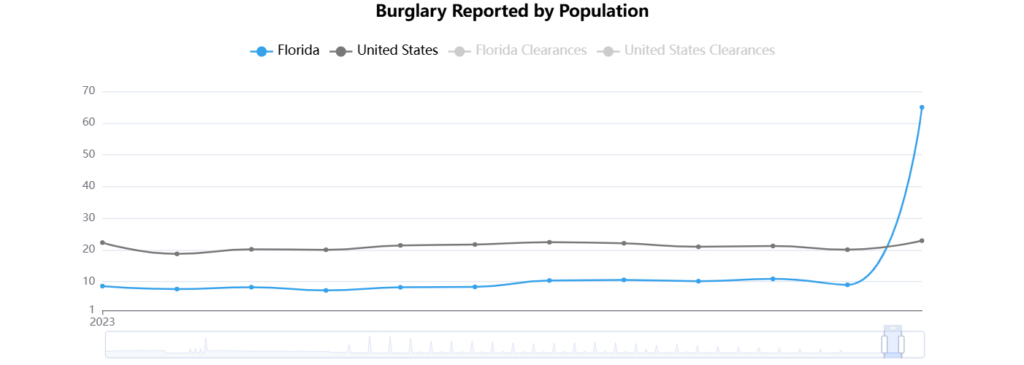
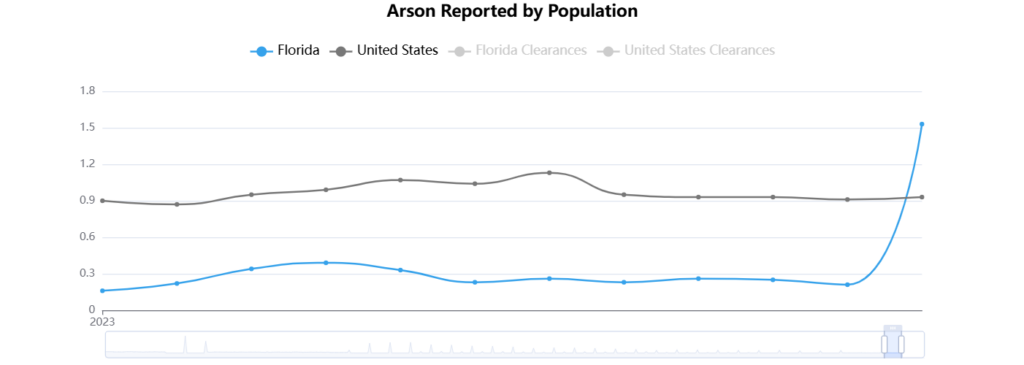
The first thing that stands out when we look at these graphs is that there is an unusual spike in violent crimes during the month of December for Florida. The reason for this is explained in an article by Leonard Adam Sipes, Jr. He spoke to the FBI about this inflated data for December and this was their response:
“Our Crime Statistics Management Unit advised that sometimes when a state/agency sends data once a year, the figures fall in December, inflating the December totals.” – The FBI
This means that some law enforcement agencies in Florida sends their data more frequently while others send their data once a year. This explains why we such a rise the data during the months of December. If we disregard December we can see that across the board all violent crimes in Florida are below the national rate throughout the year. While this is a good sign we need more consistent participation from all Law enforcement agencies to have a clear understanding.
Implications for Policy and Public Safety
The latest crime statistics for Florida reveal important insights that can shape policies and public safety initiatives across the state. With violent and property crime rates showing distinct trends, policymakers and law enforcement agencies have an opportunity to tailor their strategies to address specific challenges effectively. Three major implications are:
1. Evidence-based crime prevention strategies
One critical implication is the importance of adopting evidence-based crime prevention strategies. For instance, communities experiencing higher rates of violent crimes, such as aggravated assaults, could benefit from focused interventions like community policing, conflict resolution programs, and youth outreach initiatives. These efforts not only reduce immediate crime but also address the underlying social issues contributing to criminal behavior.
The transition to the National Incident-Based Reporting System (NIBRS) offers a more detailed understanding of crime patterns, enabling policymakers to allocate resources more effectively. By analyzing detailed data, law enforcement can identify high-crime areas, target repeat offenders, and deploy resources strategically to prevent future incidents.
2. Enhanced security measures
Property crimes, which also significantly affect Floridians, highlight the need for enhanced security measures. Policies encouraging neighborhood watch programs, public awareness campaigns, and improved surveillance systems can empower residents to protect their communities. Additionally, public-private partnerships can help fund and implement technological solutions such as smart policing tools.
3. Community engagement and transparency
Lastly, these statistics emphasize the value of community engagement and transparency. Law enforcement agencies can build trust and cooperation by sharing crime data openly and involving residents in safety initiatives. This collaborative approach fosters a sense of shared responsibility for maintaining safe communities across Florida.
As more comprehensive data becomes available through NIBRS, Florida’s policymakers and public safety officials can continue refining their strategies, ensuring that efforts to reduce crime are both effective and sustainable. By combining advanced analytics, community involvement, and evidence-based interventions, the state can create safer environments for all its residents.
Conclusion
The latest statistics for Florida crime rate provide a critical lens through which to understand the state’s current public safety landscape. While transitioning to the National Incident-Based Reporting System (NIBRS) enhances the depth and accuracy of crime data, the trends revealed thus far offer valuable insights for policymakers, law enforcement, and the community.
From the reduction in violent and property crimes to the ongoing challenges faced by certain regions, the data highlights both progress and areas needing attention. These statistics underscore the importance of adopting evidence-based policies, fostering community engagement, and leveraging advanced technologies to address crime effectively.
As Florida continues to align with NIBRS standards, future reports will offer even greater clarity, enabling more targeted and impactful strategies. By staying informed and involved, both residents and officials can contribute to safer neighborhoods and a more secure future for everyone in the state.